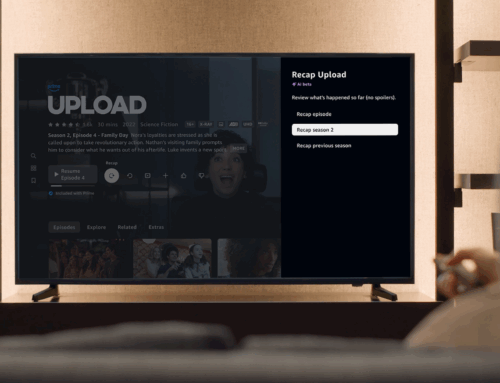After Announcing the End of Smartphones, Mark Zuckerberg Bets Big on $1,000 Smartglasses
April 2, 2025
Meta is preparing to enter a new phase in its wearable technology push with the release of Hypernova, a pair of augmented reality smartglasses expected to launch later this year.
With a reported price point starting above $1,000, the new device may feature a compact heads-up display in the right lens, designed to offer quick access to notifications, photos, and mapping services.
According to a report from Bloomberg, some versions of the Hypernova glasses could cost as much as $1,400, making them one of Meta’s most expensive wearable devices to date.
Compact Display and Improved Camera System
The standout feature of the upcoming Hypernova glasses is a tiny, monocular display embedded in one lens. This compact screen would allow users to view notifications, access apps like Google Maps, and potentially even browse through photo galleries or interact with a simplified app tray.
The display appears to be designed for efficiency rather than immersion, suggesting that Meta is aiming for lightweight usability over full-blown mixed reality.
Hardware enhancements may also extend to the glasses’ camera system, with leaks suggesting a larger sensor capable of capturing higher-quality images compared to the 12-megapixel camera used in the current Ray-Ban Meta Smart Glasses.
Meta may present the device officially at its upcoming Meta Connect conference, continuing its trend of iterative smartglasses development while introducing new use-case scenarios.
Design Echoes Previous Ray-Ban Meta Glasses
The Hypernova model will reportedly retain a design aesthetic similar to Meta’s previous wearables. Controls may include physical buttons for photo and video capture, as well as capacitive sensors that allow users to adjust audio or interact with the glasses using simple touch gestures.
This interface mirrors the existing control scheme found in the Ray-Ban Meta Smart Glasses, which are currently priced between $300 and $380 depending on lens options.
These existing models offer basic AR-lite features like on-board speakers and voice assistant access, mainly used for snapping casual photos or listening to audio content without headphones.
Meta seems to be betting that a more advanced display, combined with camera and software updates, will help differentiate the Hypernova line from its predecessors.
Software Remains a Persistent Weak Link
While Meta is placing emphasis on the hardware aspects of its upcoming smartglasses, the real challenge appears to lie in software integration. The Hypernova is expected to rely heavily on the Meta View app—software that has received criticism for being unintuitive and inflexible, particularly when used with iOS devices.
The app currently serves as the bridge between Meta’s smartglasses and smartphones, handling functions like media transfer and device settings. Meta’s broader issue lies in its dependence on third-party operating systems, especially Apple’s iOS, which imposes limits on interoperability and background activity.
As noted by Mark Zuckerberg himself, Apple’s ecosystem restrictions make it difficult for Meta’s wearables to perform reliably on iPhones. These software barriers have hampered the appeal of previous Meta products and could pose the same risk for the Hypernova glasses if improvements are not made.
More Smartglasses Expected to Launch This Year
Reports also suggest that Hypernova will be just one part of a larger smartglasses rollout planned by Meta in 2025. Among the rumored additions is a possible collaboration with Oakley, aimed at producing sports-focused visors targeted at athletes.
These additional models could signal Meta’s intention to diversify its wearable offerings and tap into different user demographics. Still, the success of any new product in the lineup may ultimately hinge on whether Meta can overcome its software ecosystem limitations and deliver a smoother, more integrated user experience.
Search
RECENT PRESS RELEASES
Related Post




